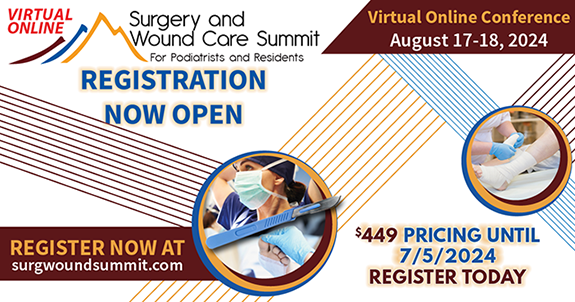
Practice Perfect 916
Residency Accreditation Visits:
Painful But Educational
Residency Accreditation Visits:
Painful But Educational

Recently, the Chino Valley Medical Center residency went through our on-site accreditation visit. In case this doesn’t sound familiar, all podiatric residencies are accredited by the Council on Podiatric Medical Education (CPME), and we all go through periodic reviews to make sure we are properly educating residents and following the appropriate rules set out in the CPME 320 document. As you might imagine, the on-site review is a potentially stressful experience for the administration of these programs, and some programs might dread this experience. I’d like to report just the opposite with our experience and use it to highlight the benefits of having a very specific philosophy on learning and improving.
I’ll start by saying that by no means is my program perfect, and there are several improvements that I, as program director, learned that I needed to make. But I did my best to suppress my ego, keep an open mind, and take in the entire process to learn to be a better director and improve my program.
Preparing for the site visit was an immense amount of work. There’s a lot that goes into the preparations, including inviting many busy clinicians and residents to come to the hospital, set up an agenda, completing information forms and emails, and responding to information requests and clarifications from the site team. Perhaps the most stressful aspect for me was responding to the large number of questions from the site team. These questions forced me to take a deep and probing look at the residency that I run (much more so than what I would have done myself). This was uncomfortable but highly educational. There were several protocols that my program improved as a result of this examination.
It was also highly important that the site team that visited for the day (3 team members, a leader, a representative from ABFAS and one from ABPM) were incredibly collegial, kind, caring, and professional. They approached the process with the goal of making sure the residents were receiving the proper training and to help the residency improve while making sure that we were adhering to the CPME standards. I would announce their names in gratitude, but I’m not sure if it’s allowed.
The point to this is that growth and improvement, whether it’s a podiatric residency or an individual, requires two primary components. The first part is to toss aside your ego; don’t worry about looking ignorant or not “the best”. This opens you up to the second step, focusing on your deficiencies. When it comes to the business world, it’s often better to maximize strengths, but when we’re learning something new – such as a resident becoming a foot and ankle surgeon – it’s more powerful to seek out knowledge gaps and weaknesses.
My best advice to you: Toss aside your ego and seek out those special people willing to help you learn. Finding them is where the learning starts.
As a teacher, when I’m working with a student or resident, I’m watching all the time to see what my trainee can do and where their limitations are. When we reach that point, that’s where the learning starts! So, when you’re learning something new, don’t focus on what you look like or what others think. Remember that learning is often uncomfortable. Seek out those special people willing to help you learn. Most importantly, hone your attention on your deficits and weaknesses and you’ll also be honing your skills to reach the next level.
Best wishes.

Jarrod Shapiro, DPM
PRESENT Practice Perfect Editor
[email protected]

































Comments
There are 0 comments for this article